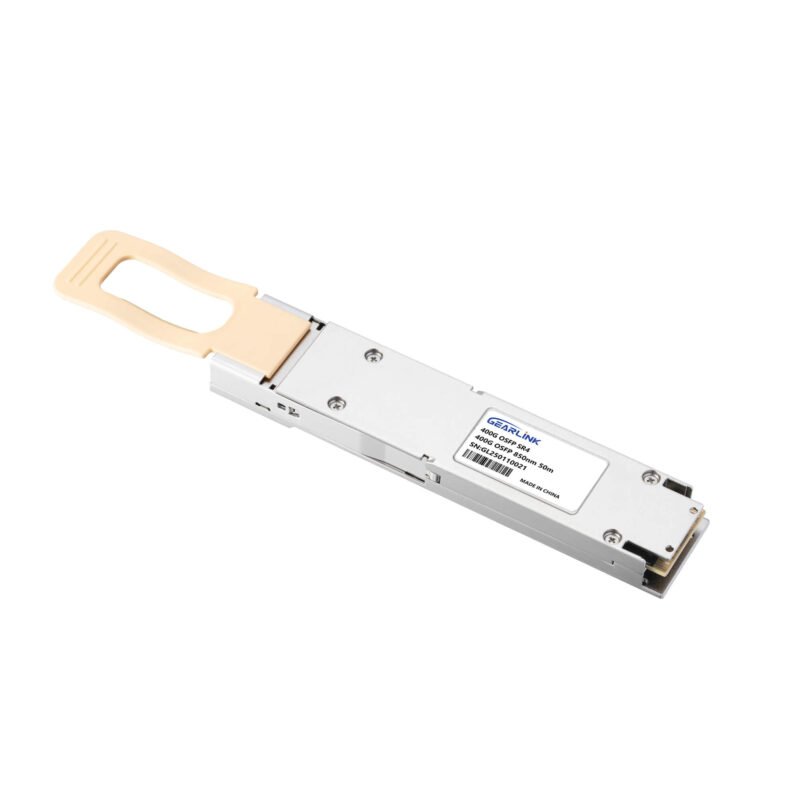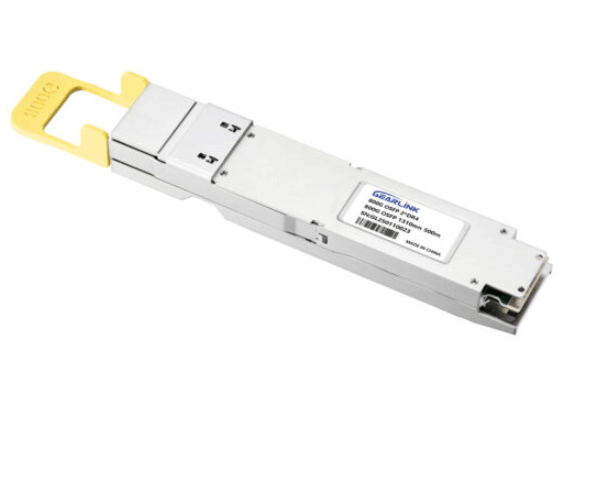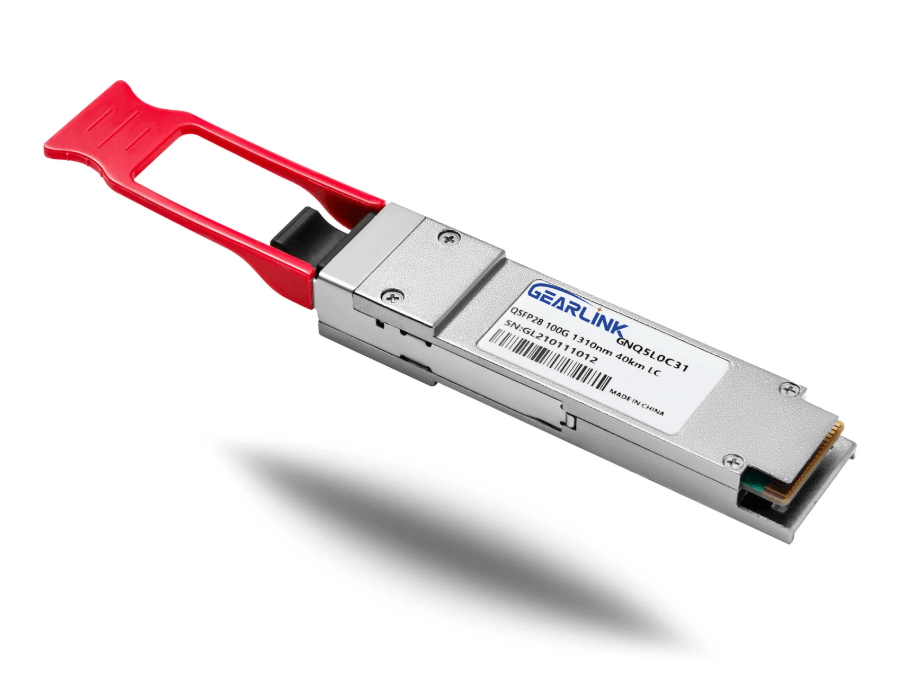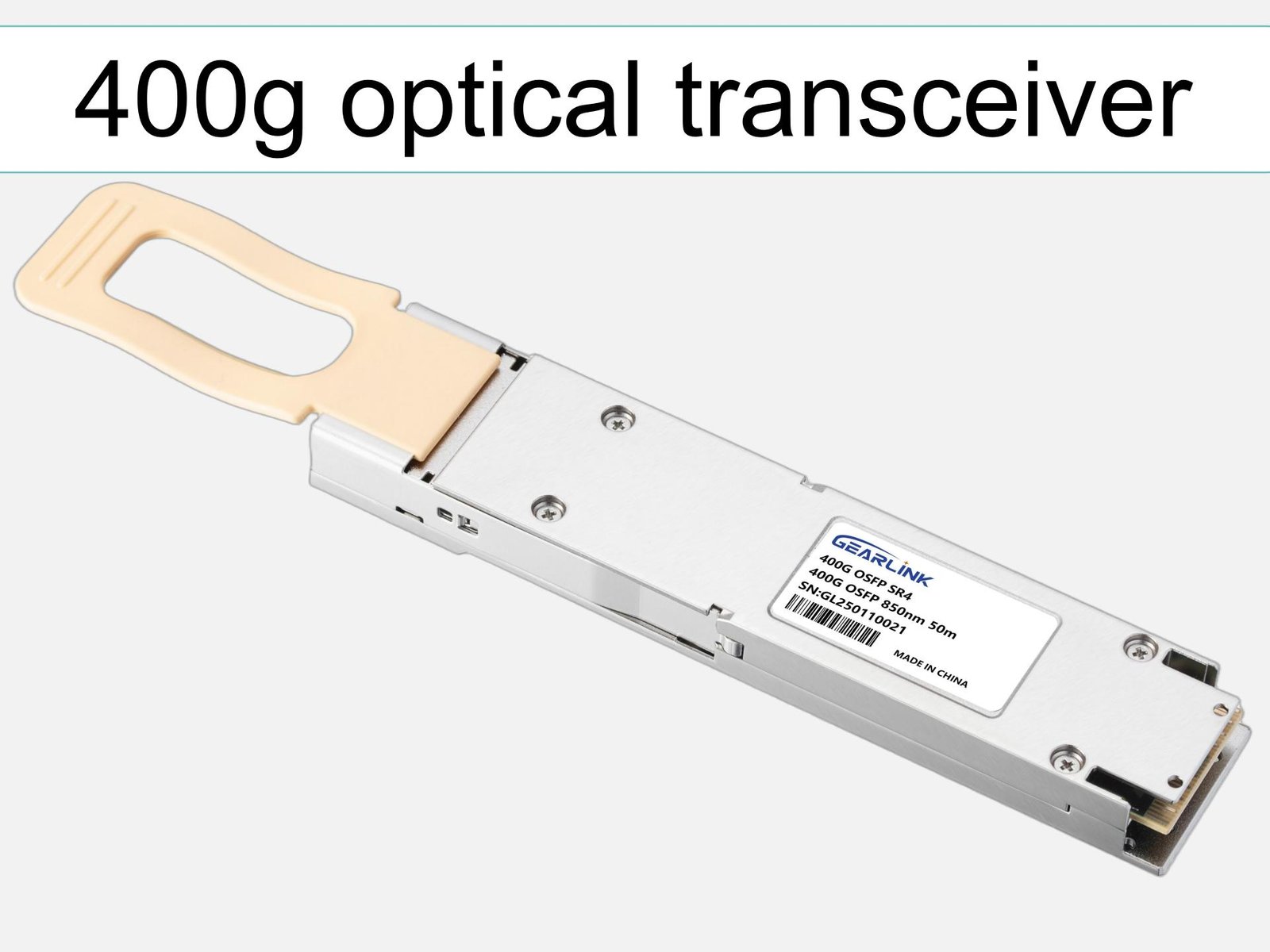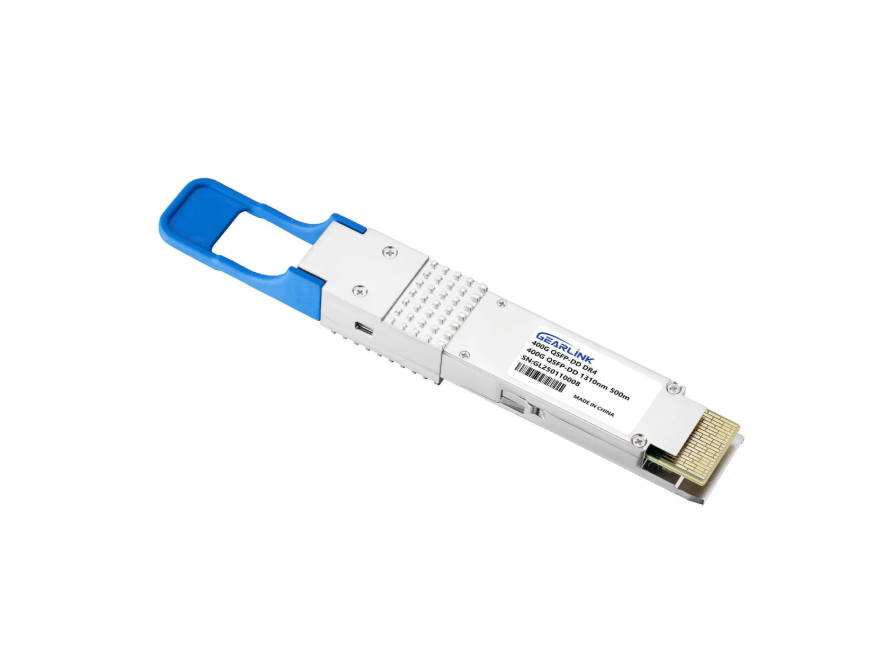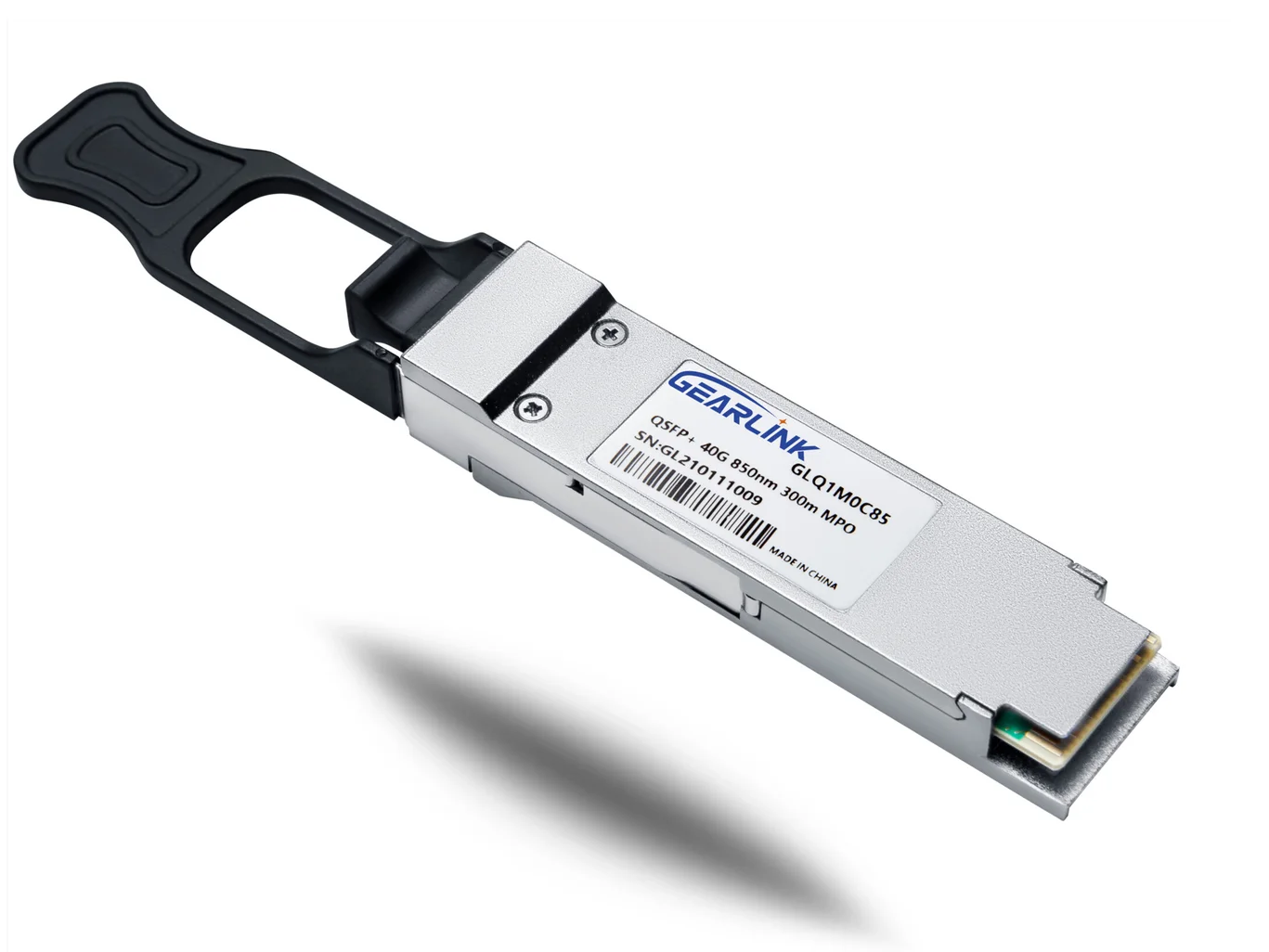The relentless demand for data has propelled data center networks into an era of unprecedented speed and complexity. Today, network architects face the challenging mandate of scaling bandwidth while simultaneously controlling capital expenditures (CapEx) and operational costs (OpEx). Consequently, the focus has shifted dramatically toward high-density, high-speed, and high-value optical interconnects. Specifically, the cheap 400G OSFP SR4 transceiver has emerged as a cornerstone technology, offering the critical 400 Gigabit Ethernet (400GbE) speed necessary for modern cloud and hyperscale environments without incurring the prohibitive costs of earlier generations.
This comprehensive guide delves into why the 400G OSFP SR4 module stands out as the prudent choice for data centers in 2025. We will analyze the technical features that contribute to its competitive pricing, detail its essential applications in modern network architecture, and provide a framework for evaluating quality beyond the sticker price, ensuring that cheap translates to value and long-term reliability.
The Imperative for Cost-Effective 400G Connectivity
The digital world runs on data centers, and the exponential growth of artificial intelligence (AI), machine learning (ML), and high-resolution streaming requires massive, scalable bandwidth. 100G is rapidly becoming a bottleneck, pushing the industry to adopt 400G as the new fundamental connection speed between switches, routers, and servers. This shift, however, presents a significant economic hurdle: how can massive infrastructure upgrades be implemented without ballooning the Total Cost of Ownership (TCO)?
The answer lies in standardization, competition, and technological maturity. The development of standards like 400GBASE-SR4 has created an open market, allowing specialized third-party vendors to offer high-quality, interoperable modules at competitive prices. This market pressure has directly led to the availability of cheap 400G OSFP SR4 solutions, enabling large-scale deployments that were previously economically unfeasible. By focusing on cost-effective, high-volume transceivers, data centers can achieve necessary speed upgrades while maintaining fiscal responsibility.
Deconstructing the Cheap 400G OSFP SR4 Transceiver
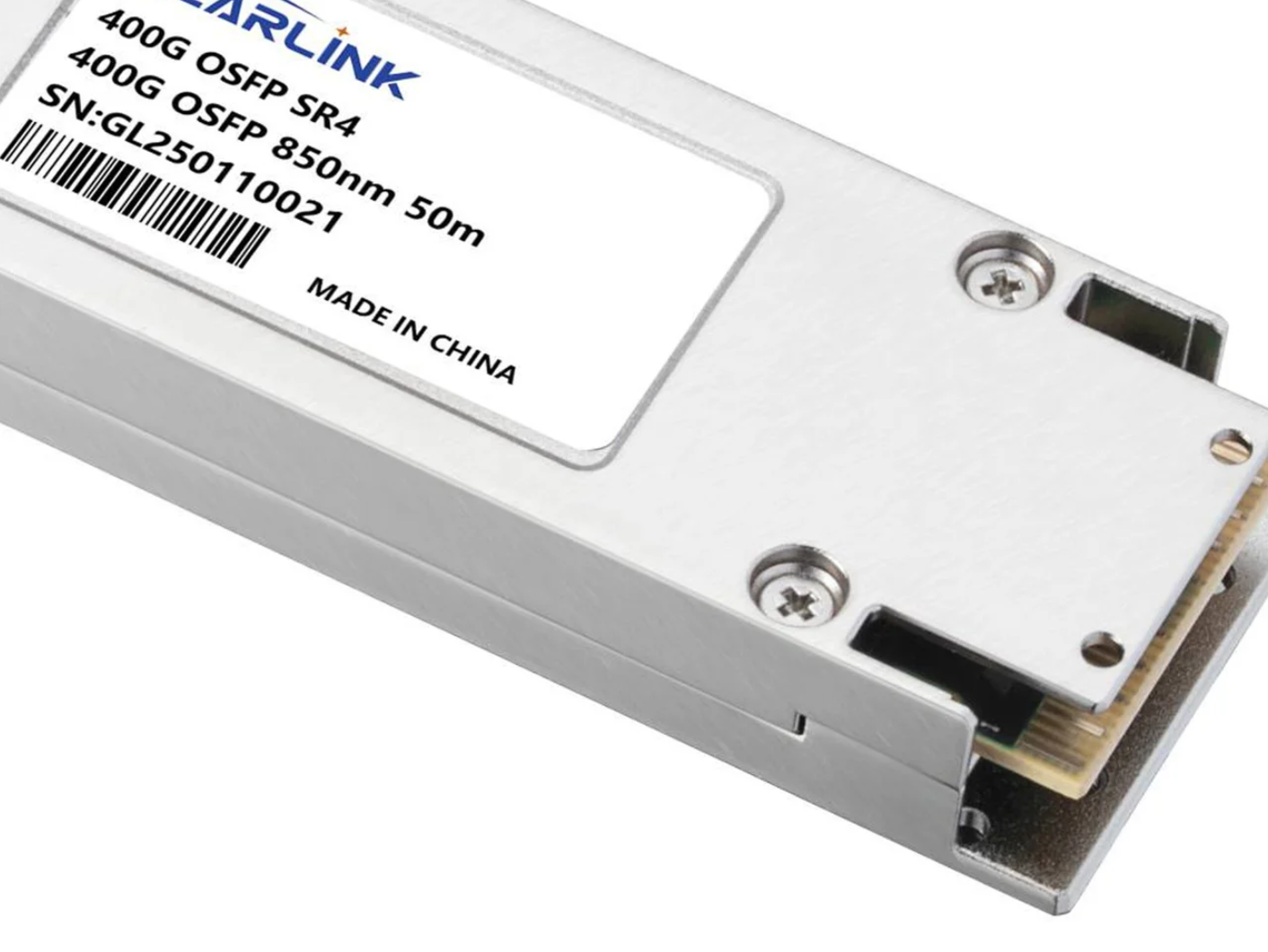
To truly appreciate the value proposition, it’s necessary to dissect the components and specifications that define this module type. The name itself reveals three crucial elements: the form factor (OSFP), the speed (400G), and the reach/technology (SR4).
OSFP vs. QSFP-DD: The Form Factor Debate in 400G
The 400G landscape is largely defined by two competing form factors: QSFP-DD (Quad Small Form-factor Pluggable Double Density) and OSFP (Octal Small Form-factor Pluggable). While both offer 400GbE, the OSFP module is designed with a slightly larger footprint, which inherently provides better thermal management capabilities. This superior heat dissipation is critical for high-power density applications, especially as modules integrate more complex optics and electronics.
Although the initial investment in OSFP infrastructure might be slightly higher than QSFP-DD in some instances, its thermal stability can translate to lower cooling costs and higher system reliability over the product lifecycle—a substantial TCO benefit. Therefore, choosing a cheap 400G OSFP SR4 transceiver allows users to benefit from its inherent thermal advantages without compromising on budget.
Understanding the “SR4” Specification
The “SR4” in the module’s name stands for Short Reach, 4 channels. This is arguably the most significant factor driving the cost-effectiveness of this transceiver.
- Technology: SR4 modules typically utilize VCSEL (Vertical-Cavity Surface-Emitting Laser) arrays. VCSEL technology is mature, highly standardized, and significantly less expensive to manufacture than the EML (External-Cavity Laser) or Silicon Photonics technology required for longer-reach applications (like LR4 or DR4).
- Fiber Type: The SR4 is designed for use with Multi-Mode Fiber (MMF), specifically OM3 or OM4. MMF is generally easier to handle and less costly to deploy over short distances than Single-Mode Fiber (SMF).
- Reach: It supports a maximum distance of up to 100 meters over OM4 fiber (or 70 meters over OM3). This range perfectly suits the vast majority of intra-rack and inter-rack links within a single data center building, which accounts for the bulk of optical module consumption.
- Interface: It uses a parallel optics approach, typically connected via an MPO-12 connector, utilizing 8 fibers (4 transmit, 4 receive).
This combination of proven, low-cost VCSEL technology and short-distance application makes the cheap 400G OSFP SR4 a high-volume, commodity solution that delivers exceptional performance where it matters most—the core of the modern data center fabric.
Key Features Driving Down the Cost of 400G OSFP SR4 Modules
400GBASE-SR4 OSFP 850nm 50m DOM MPO-12/APC MMF Optical Transceiver Module
Price range: NT$499 through NT$898
The continued decrease in the price of 400G modules is not a fluke; it’s the result of systemic improvements and market dynamics. For users seeking the best value, understanding these factors is essential:
1. Technology Maturation and Standardized Components
The underlying VCSEL technology for SR4 is well-established, allowing manufacturers to achieve high yields and consistent performance. Furthermore, the use of the 50G PAM4 (Pulse Amplitude Modulation 4-Level) electrical signaling standard for 400G has been perfected, further streamlining the design and manufacturing of the integrated circuits (ICs) within the 400G OSFP SR4 module. Standardization leads to commoditization, which directly translates to lower prices for the end-user.
2. Supply Chain Optimization and Competition
The optical module market is intensely competitive. Non-OEM (Original Equipment Manufacturer) or third-party vendors, such as Optictran, specialize in highly optimized supply chains and strict quality control processes. They focus on delivering fully interoperable, MSA-compliant (Multi-Source Agreement) transceivers that meet or exceed OEM specifications. This ecosystem competition is the primary driver allowing for the successful procurement of cheap 400G OSFP SR4 transceivers that still maintain high levels of quality and reliability.
3. Focus on Short-Reach, High-Volume Demand
Since the majority of data center connections are short-reach, the demand for SR4 is immense. High-volume manufacturing inherently reduces per-unit cost due to economies of scale. Manufacturers can invest heavily in automated assembly and testing processes specifically tailored to the cheap 400G OSFP SR4 design, driving down labor and material costs compared to lower-volume, specialized long-haul optics.
The Critical Application of 400G OSFP SR4 in Modern Data Centers
The practical application of the 400G OSFP SR4 is concentrated in the high-density aggregation layers of the network fabric. Its primary role is to eliminate bottlenecks in the data path, ensuring low latency and high throughput.
Spine-and-Leaf Architecture
In modern spine-and-leaf (or Clos) network topologies, 400G OSFP SR4 modules typically link the leaf switches to the spine switches. The short-reach nature of SR4 is perfect for these connections, which are usually within a single row or between adjacent rows of racks. Utilizing 400G allows for massive oversubscription reduction, meaning that far more bandwidth is available to individual servers and racks, thus improving overall network performance and efficiency.
High-Density Server and Storage Aggregation
As servers transition to 50G and 100G Network Interface Cards (NICs), the aggregation layer (the switch) must scale proportionately. A 400G OSFP SR4 can be broken out into 4×100G links using breakout cables (MPO-to-LC fanout cables), connecting to four separate 100G devices. This capability makes the module highly versatile for high-density connections between Top-of-Rack (ToR) switches and storage arrays, maximizing the utility of the module and reinforcing its “value” proposition.
A Prudent Approach: Assessing Quality and Reliability in Low-Cost Optics
While the goal is to find cheap 400G OSFP SR4 modules, prudence dictates that cost must be balanced with performance and longevity. The truly “best value” module is one that is both competitively priced and supremely reliable, ensuring minimal downtime.
The Dangers of Too Cheap
Excessively low prices can often indicate compromises in component quality or testing rigor. Low-quality optics can lead to:
- System Incompatibility: Non-compliant firmware or poor design can cause the module to fail authentication with host equipment.
- High Failure Rates: Sub-par laser chips or poor heat management drastically shorten the module’s lifespan.
- High Error Rates: Poor optical alignment or signal integrity can result in costly packet loss and data retransmission.
The Value Assessment Checklist
When sourcing 400G OSFP SR4 modules, users should prioritize vendors that emphasize these features:
- MSA Compliance: The transceiver must fully adhere to the Multi-Source Agreement to guarantee interoperability with network equipment from various OEMs.
- System-Level Testing: The best vendors perform rigorous, real-world testing using equipment from major switch manufacturers (e.g., Cisco, Juniper, Arista) to ensure seamless integration and performance.
- Digital Diagnostics Monitoring (DDM): The module must offer accurate, real-time reporting of operating parameters like temperature, voltage, and transmit/receive power, allowing network teams to proactively monitor health and troubleshoot issues.
- Warranty and Support: A robust warranty and accessible technical support are non-negotiable indicators of a vendor’s confidence in their product quality.
A reliable, cheap 400G OSFP SR4 module is one that passes all these tests. It reduces initial CapEx while minimizing OpEx through high reliability and efficient operation.
Future Outlook: 2025 and Beyond for 400G and 800G
As we move toward the middle of the decade, 400G is cementing its position as a highly commoditized technology. The continued optimization of VCSEL technology and manufacturing scales means that the price point for the cheap 400G OSFP SR4 will continue its downward trend.
While 800G is emerging (often in the OSFP-XD form factor), it will initially target the most bandwidth-intensive, specialized applications. For the general intra-data center spine-and-leaf and aggregation layers, 400G is expected to remain the dominant, most cost-effective speed for the foreseeable future. Investing in high-value 400G solutions today ensures a massive bandwidth leap that will satisfy the needs of most enterprise and cloud data centers for years to come, offering the optimal balance of performance, density, and financial prudence.
Ultimately, the smartest investment in data center optics is not simply buying the lowest-priced component, but rather securing the best value 400G OSFP SR4 from a reliable vendor, ensuring high performance, long-term stability, and complete network interoperability.
Frequently Asked Questions (FAQ)
Q: Is the 400G OSFP SR4 compatible with QSFP-DD ports?
A: No, the OSFP (Octal Small Form-factor Pluggable) and QSFP-DD (Quad Small Form-factor Pluggable Double Density) are physically different form factors. They cannot be directly interchanged in the same port. You must use the transceiver that matches the host port’s form factor.
Q: Why is the SR4 module so much less expensive than 400G LR4 or FR4 modules?
A: The significant cost difference is due to the underlying laser technology and the fiber used. SR4 utilizes highly mature and cost-effective VCSEL lasers and Multi-Mode Fiber (MMF) for short reaches. LR4 and FR4 require more complex, higher-precision DML or EML lasers and Single-Mode Fiber (SMF) to achieve much longer distances (e.g., up to 2km or 10km), making them considerably more expensive to manufacture.
Q: Can I break out a 400G OSFP SR4 into four 100G links?
A: Yes, the 400G SR4 utilizes 8 parallel lanes (4 transmit, 4 receive, each operating at 100G). You can use an MPO-to-LC fanout cable assembly to connect the 400G module to four separate 100G QSFP28 SR4 modules or devices, a common practice for aggregation applications in the data center.
